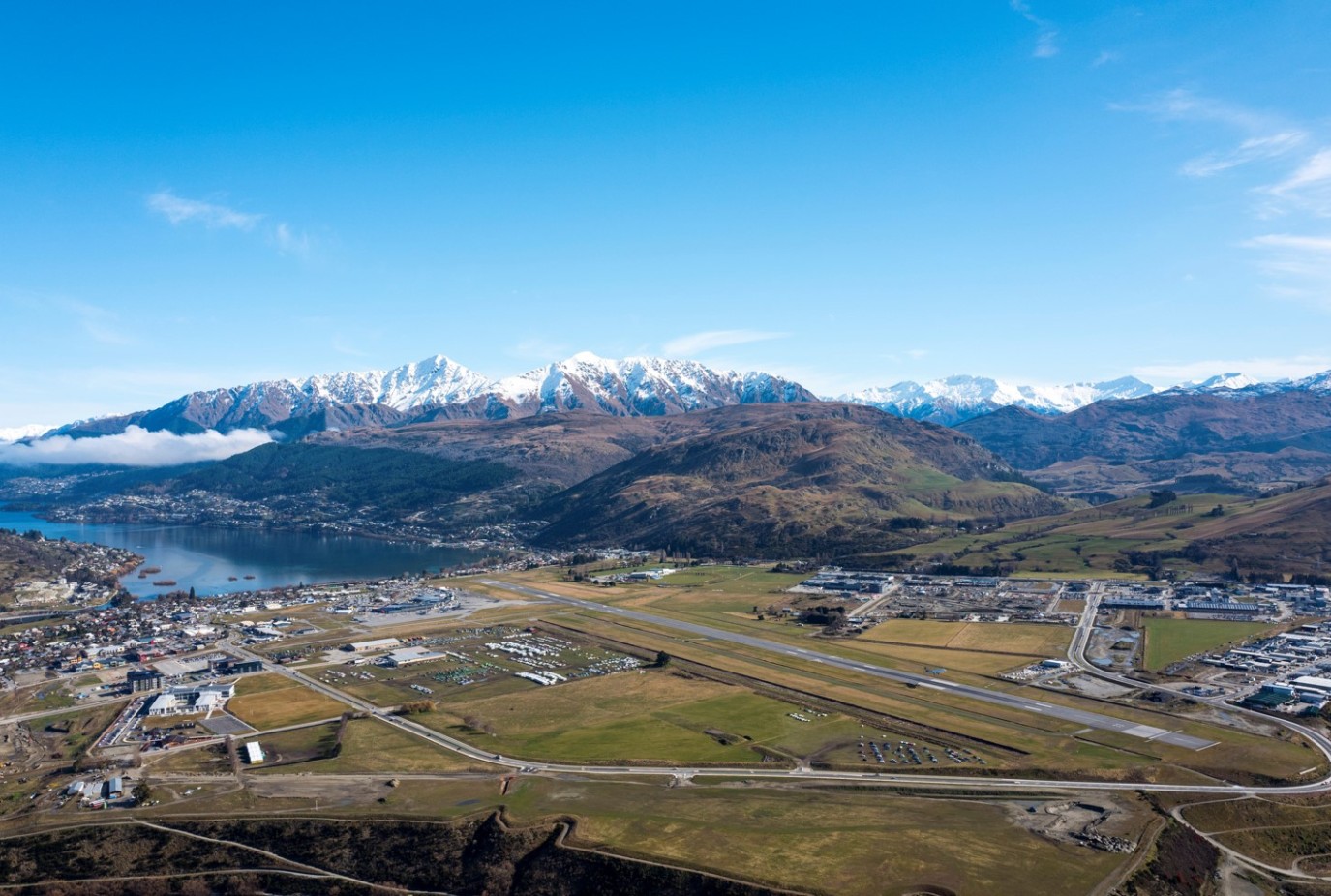Queenstown aviation tax mooted

Climate activists want Queenstown Airport passengers to be charged a $100 local tax per flight, which they say could raise hundreds of millions of dollars a year for ratepayers.
Extinction Rebellion’s Pierre Marasti says the main goal of the tax would be to reduce demand, thereby reducing emissions.
But a passenger tax would also provide welcome income for Queenstown Lakes District Council (QLDC), he told councillors last Thursday. Queenstown ratepayers are facing 13% average rates increase this year, as the council struggles to fund infrastructure in the tourist town.
QLDC is the majority shareholder in the Queenstown Airport Corporation (QAC), which paid it a record $4.49 million interim (six-month) dividend in February, which equates to about $150 per ratepayer. The full FY23 dividend is expected to eclipse the record $8.3m paid in FY19.
Based in 2019’s 2.39m passenger movements (arrivals and departures), Marasti says a $100 tax could raise $239 million for QLDC.
“If we manage to reduce the number of passengers to let’s say one million a year to start with, this would still bring $100 millions to the council per year,” he says.
Like the proposed bed tax, an airport passenger tax would need support and legislation from Central Government, but Marasti says it stacks up considering the $140m outlay to partially decarbonise the steel industry, avoiding 1% emissions in four years.
He admits it would make it harder for everyone but the wealthy to come to Queenstown, but says reduced air traffic is necessary to avoid climate collapse, which will greatly increase the cost of living.
“Does it make sense to keep flying as affordable as possible when we know that it is one of the main drivers of climate change, and that climate change is already today impoverishing us all and doing a lot worse to some of us?”
Christchurch councillors, last Wednesday, also cited environmental concerns when they began to question Christchurch International Airport Ltd.’s plans to build a new wide-bodied jet capable international airport at Tarras, Central Otago, rivalling Queenstown Airport.
CAIL has recently bought another 40 hectares of farmland in Tarras for an undisclosed amount. It had already purchased 750ha, spending $45m on the project.
Christchurch City Council (CCC) owns CAIL through its subsidiary Christchurch City Holdings Limited (CCHL).
CCC councillors voted seven to six to support a motion, brought by Linwood Ward councillor Yani Johanson, that the council should: “Express concern at the strategic direction of CIAL’s proposal to continue to progress an airport at Tarras due to the costs and climate change impacts.”
During the meeting, it was clear councillors were about two years behind their Queenstown counterparts in understanding how much control they could or should exert on CAIL and its board. CCHL chair Abby Foote said she would bring CAIL to present to council.
FlightPlan2050 spokesperson John Hilhorst believes QLDC should take advantage of the “viable alternative” of Tarras Airport to close Queenstown Airport and convert the 153ha of Frankton land into a “quality, high-density CBD-campus”.
Hilhorst presented the second of three reports outlining FlightPlan 2050’s proposal to Queenstown councillors on Thursday, which the group claims would return $2 billion in land value to ratepayers.
“Any change to status quo is feared, we can understand that, but it is inevitable that Queenstown Airport will eventually close in the face of mounting urban, climate change and safety pressures,” Hillhorst says.
“Now is the time to have the conversation, with Tarras a viable alternative and other options not even investigated. Otherwise, urban sprawl will entrench centuries of high emissions and QAC Masterplan debt levels could threaten our council’s supermajority control.”
Queenstown Airport’s $350m 2032 masterplan out for public consultation until 23 June.









